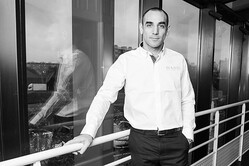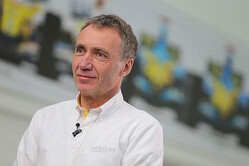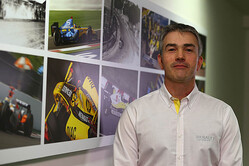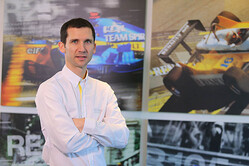


03/02/2016
NEWS STORY
 Why has Renault returned to F1 as a constructor?
Why has Renault returned to F1 as a constructor?
Cyril Abiteboul, Renault Sport Racing Managing Director: The reasons are threefold. The first is based on a solid business strategy. As an engine supplier our brand visibility was marginal, but it was acceptable when the cost of the technology was contained. With the dual problem of the increased expenditure of the V6 regulations and the level of competition that raised dramatically, it was not the case anymore. As a team, we can achieve improved returns in all areas, such as brand awareness in traditional markets and new media platforms. This leads to the second reason: to use F1 to grow the Renault Sport brand in particular thanks to a controlled communication strategy with a platform that we fully own. The final reason is that Renault is passionate about motorsport. There is a genuine pride in the results of the past and an enthusiasm to do justice to them in the present day.
How was the news greeted at Renault?
CA: Within the Renault group people have naturally been very positive as it is an opportunity for the group to grow and to re-own the results of the past. It also adds an extra sparkle to the brand as it tackles bigger challenges in its core business. At Enstone the atmosphere has been buzzing. When we visited the factory in November there was a lot of work, but the mood was muted. Now it's like a light has gone back on – everyone is flat out, but very optimistic. At Viry it's much the same, despite the huge challenge, there is now a direction. There's a real drive on both sides of the operation to build for the future.
How will Renault Sport Racing function?
CA: The creation of Renault Sport Racing is a very exciting step. For the first time in a long time we have a coherent brand and structure where all personnel working on motorsport disciplines will be managed by the same team. We will have engineers seconded to Formula E, customer programmes and Formula Renault 2.0, amongst other activities, working shoulder to shoulder. This will facilitate collaborations between Formula 1 and other racing activities we have not seen in the past, such as powertrain developments, aerodynamic advancements and, of course, greater flexibility and mobility. The human performance will also be addressed, with the Academy composed of drivers coming from our feeder series and trained to hopefully become F1 material as soon as possible.
Jerome Stoll, Fred Vasseur and myself will manage the group and create the necessary crossover points to cover a scope fairly wide from rally, to track racecars and single-seaters. But these synergies must not come to the detriment of the F1 team, which will be relatively independent to manage the very specific technical and sporting challenges of the sport. As F1 Chief Technical Officer, Bob Bell will be fully focused on the F1 performance and oversee the technical teams at Enstone and Viry to ensure everyone is following the same path. Nick Chester and Remi Taffin will manage the technical teams at Enstone and Viry respectively. I'm very happy with this arrangement; we've got strong people in the right roles and a genuine willingness to work together to move forward. We have the budget we need for now, and we need to be cost-efficient and conserve our team spirit as we revitalise existing working models.
What are the targets for this year?
CA: Each category will have its own target. In Formula 1, we have to be realistic about 2016. In some areas we are playing catch-up – it's no secret that we missed the start of the new power unit regulations and Enstone needs a bit of TLC. This is a year to re-build relations, re-energise both Enstone and Viry and create synergies within the Renault Sport Racing group and the wider Renault-Nissan Alliance. That's not to say that we will write off the year, but we are aiming to put everything in place for improved success in 2017.
There's a lot of transition to be undertaken in a short time; how do you manage this?
Frederic Vasseur, Renault Sport Racing, Racing Director: We know the road map and we have to deliver in the next three or so seasons. The first is to build up the team as one organisation and be sure that everyone works together well. Our first priority is to ensure everything goes smoothly. I don't want to focus only on the process, I know we have to build to success too and we'll have to deliver quickly. There's plenty to do.
What do you think of the component elements of the operation?
FV: Renault has been committed to Formula 1 for over 40 years, and they have a real culture of racing and we see that every day at Viry-Chatillon. Enstone is exactly the same and we can be very proud of that. My first trip to Enstone showed me there was a real attachment to Renault, some of the people here worked for Renault when they were Constructors' champions and Fernando Alonso was winning Drivers' titles. We have a strong basis to build for future success.
This will be your first role in Formula 1, how are you looking forward to this?
FV: It's correct that this is my first role in Formula 1 but I have worked a long apprenticeship in the junior categories and I'm eager to translate everything I've learnt over many years of competing elsewhere into the challenge of Formula 1. This is a new experience for me, but racing is racing and the target is always the same! The approach you need to win is the same no matter what the category.
What attracted the team to select Kevin for driving duties?
FV: Kevin has a good mix of experience and youth. He had a strong race season at McLaren two years ago and showed his ability in the junior categories such as Formula Renault 3.5. He can target winning races and championships as he has the talent. The fact he had a lack of mileage last year will motivate him and he'll be chomping at the bit to get back into it all. It's important for us because we all know 2016 won't be an easy season. We know where we are starting from and we need motivated characters like Kevin to keep pushing hard.
It's a big challenge for Jolyon in his rookie season?
FV: Jolyon goes from being the Third Driver for a private team to becoming the Race Driver for a manufacturer team and the driver with the most experience with the team. He has a very mature head on his shoulders and we know from his 2014 GP2 Series title that he can deliver against the very best on track. It's a rookie year for Jolyon, but we've seen that rookies can deliver so we are happy with the line-up we have behind the wheel.
We have one of France's top young drivers in Esteban. How exciting is it to have him as part of the line-up?
FV: Esteban is the GP3 champion and he beat Max Verstappen to the European Formula 3 title in 2014. He's probably one of the most successful young drivers over the last few years. He will have a fantastic year ahead of him with his role as Third and Reserve Driver for us, as well as further programmes with Mercedes. It's a great opportunity for him and we thank Mercedes-Benz for their support here. Esteban raced for my teams with Mercedes and Genii support and I know his talent and ability.
 What does your new role as Chief Technical Officer entail?
What does your new role as Chief Technical Officer entail?
Bob Bell, Chief Technical Officer: I will oversee the technical functioning between the two sites of Viry and Enstone. The primary purpose is to ensure a consistent strategic approach and that we make the optimum use of the joint resources at our disposal. I will work closely with each site's technical head, Nick Chester and Remi Taffin. This means I will spend around half of my time at each site where I will assist in setting the direction for chassis and engine development to ensure a consistent approach between the two locations. In terms of direct reports, my interaction with the two technical directors will not necessarily be on a day to day basis, but keeping a strategic view on how everything is progressing and ensuring that the correct level of communication is happening so we're all agreed on how we're going forward and focused on our priorities.
What is your opinion of what you've seen so far?
BB: There is tremendous potential to be tapped on both sides of the equation. To characterise the current situation in both organisations, firstly you have Enstone, which is an organisation that has been starved of resources in recent times, but structurally is pretty sound. Viry, on the other hand, could be characterised as being resourced well enough to do a credible job however recent history has seen a very difficult situation with the change to the latest power units and this has impacted on how the facility operates. The key for Viry is galvanising the leadership and direction with the new opportunities that a works F1 entry provides. The focus is more structural whereas at Enstone it's more resource-based. We're clear on what the issues have been in the past and we're working on putting them right.
What's the target?
BB: Merging the two operations towards becoming one entity, more than they have ever been before. If you look at the team's history and also the development of F1 in general, in the V8 and further back in the V10 generation, it was possible to have a more arms-length relationship between the engine and chassis side of a team, whereas now to be successful you need far more integration with the more complex power units and the evolution brought by the intensity of competition. This integration is not just measured in track performance, it's measured by how you optimise the resources available. It's not an exercise in winning at all costs; it's an exercise in winning in a controlled manner. With two locations we can look for economies of scale to ensure we're getting the maximum and find operational efficiencies. We need to be much more integrated and less disparate than before.
How exciting is this project?
BB: This is a tremendously exciting project. I've always had a massive respect for what the engine manufacturers do in Formula 1 and it's an incredibly difficult challenge for any manufacturer no matter how good the final product is relative to the other engines. To have the opportunity to have influence over both the chassis side and engine side is an honour and a very challenging responsibility that I am really looking forward to. For everyone involved it's a hugely exciting period to be involved with a new works team that's manufacturer backed and to see it go from what is a low baseline to bring it a level of success and to do this in a sustainable manner is a wonderful journey to be embarking upon. It's something we are all aiming to be proud of. It's a different prospect to buying a team or engine partner that is currently achieving success; any success here will be from everyone's hard work so it's going to be very rewarding.
 What can you tell us about the R.S.16?
What can you tell us about the R.S.16?
Nick Chester, Chassis Technical Director: The R.S.16 will be the third car produced by Enstone since the era of the V6 hybrid regulations came into play. It builds on all the lessons learnt from our previous two cars and can be seen as an evolution from the E22 and E23. For the second year running we've changed power unit and certain elements of the gestation period for the R.S.16 have been very short, however we think we've got a solid baseline to work from.
Can we expect any surprises from the R.S.16?
NC: We want a stable base to enable us to introduce developments through the year. The first iteration shouldn't have any surprises but we'll be working on a number of aspects to improve the car through the season as well as lay the groundwork for 2017 and beyond.
How tight has the timeline been for the R.S.16?
NC: Very. We were advanced with the development of our chassis with the previous power unit but our focus shifted as the likelihood increased - and was ultimately confirmed - that we would become part of the Renault family once more. It's fair to say we've been very, very busy!
How different is the technical situation in Enstone relative to that twelve months ago?
NC: We're now Renault and we have a long term project ahead of us, which is very exciting. We are able to plan long term now, which will help us develop and enable us to look into new areas. Already we've seen that we can make terrific progress in a short timeframe without the struggles we had last year to get all the components for the car ready.
What's the balance between the long term programme and the short term needs for the 2016 challenger?
NC: It's something of a juggling act in the short term. It was a very late switch in the development programme for the 2016 car, which has meant a tight schedule with the chassis. It's been a super compact programme, but we've seen with the homologation of the chassis that we can react quickly and do a great job. The response of the workforce at Enstone has been terrific. After all the travails of the past, everyone is back and firing on all cylinders working relentlessly on the tasks at hand. It's amazing to see.
What are the technical objectives for the season?
NC: We have a focus on developing the building blocks to help us progress for 2017. We want to improve reliability, develop the integration between the chassis and the power unit, all with the target of having a far more integrated car for the future. A lot of our focus is also about building the team and the infrastructure. 2016 is about getting the car out and learning lessons on track as we build the team rather than having set aspirations for on-track performance.
How much change do you expect in the infrastructure at Enstone?
NC: Building up the many departments at Enstone is very much part of the current programme and we're interviewing for a lot of new positions. By the end of 2013 we were around 100 people fewer than we'd been before and the task now is recruiting the best people to strategically build the team through 2016. We also have access to more physical resources than before so we can fully deploy our departments as they exist now to enable full utilisation of the personnel we currently have.
 How was the news that Renault would return to team ownership greeted at Viry-Chatillon?
How was the news that Renault would return to team ownership greeted at Viry-Chatillon?
Remi Taffin, Engine Technical Director: Naturally, everyone was very enthusiastic about the news at Viry. After a long period of success in the V8 era, we didn't have a good 2014 and it took us until the midpoint of 2015 to get back on track and get our heads out of the water. In 2016 it feels like we can breathe again and look at where we are going. We know that this year will be hard, and everyone is fully expecting a challenge, but it feels good to have a long term plan and direction.
What are the principal changes to the Renault power unit this year?
RT: If we look back to 2015, we introduced some new concepts late in the year with the ‘Spec D' power unit. While we did not use all the concepts we developed at that point, the track test in Brazil gave us some very useful information. In particular we worked on the combustion chamber and the turbo to bring additional performance without sacrificing reliability. The power unit we will use in Melbourne is a continuation of the work we started last year and some add-ons push the concepts further. We also have some other areas we are working on so there will be further refinements coming throughout the season, but what we will see in Melbourne will already be a substantial step up from where we left off in 2015. However, we have to look at 2016 as laying the foundations for 2017 when we expect the partnership to have matured.
What are the realistic aims for this year?
RT: We recognise that the work integrating our power unit to the chassis started very late and we are doing the best we can in very challenging circumstances so we are being realistic about results in 2016. We need to continue to provide a reliable and competitive power unit, but we also need to build strong and lasting links with the chassis team at Enstone. There are advantages in already knowing a lot of the personnel and their methodologies, but it will take time to get the best from each other. Ultimately, working well together will enable us to develop the power unit and chassis more quickly and efficiently, but that takes time.
Have you made any significant changes to Viry as a result of the decision to return to a works' team?
RT: Whilst Enstone is being restarted, with Viry it is more about carrying our momentum forward. We haven't made any major operational changes since the announcement; it is more a case of putting things in order. We made significant investments for the start of the new PU regulations including new dynos, updated software and additional personnel. With a works team working with the same objectives and timeframes we can now take full advantage of those earlier investments. Renault is engaged for the long term with a solid platform and we can create equally long term strategies.
Check out our gallery, here.